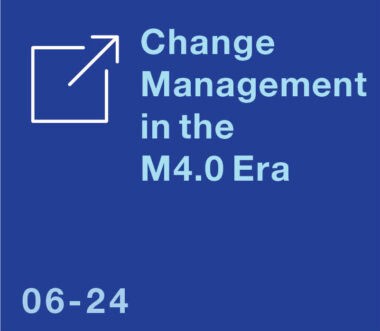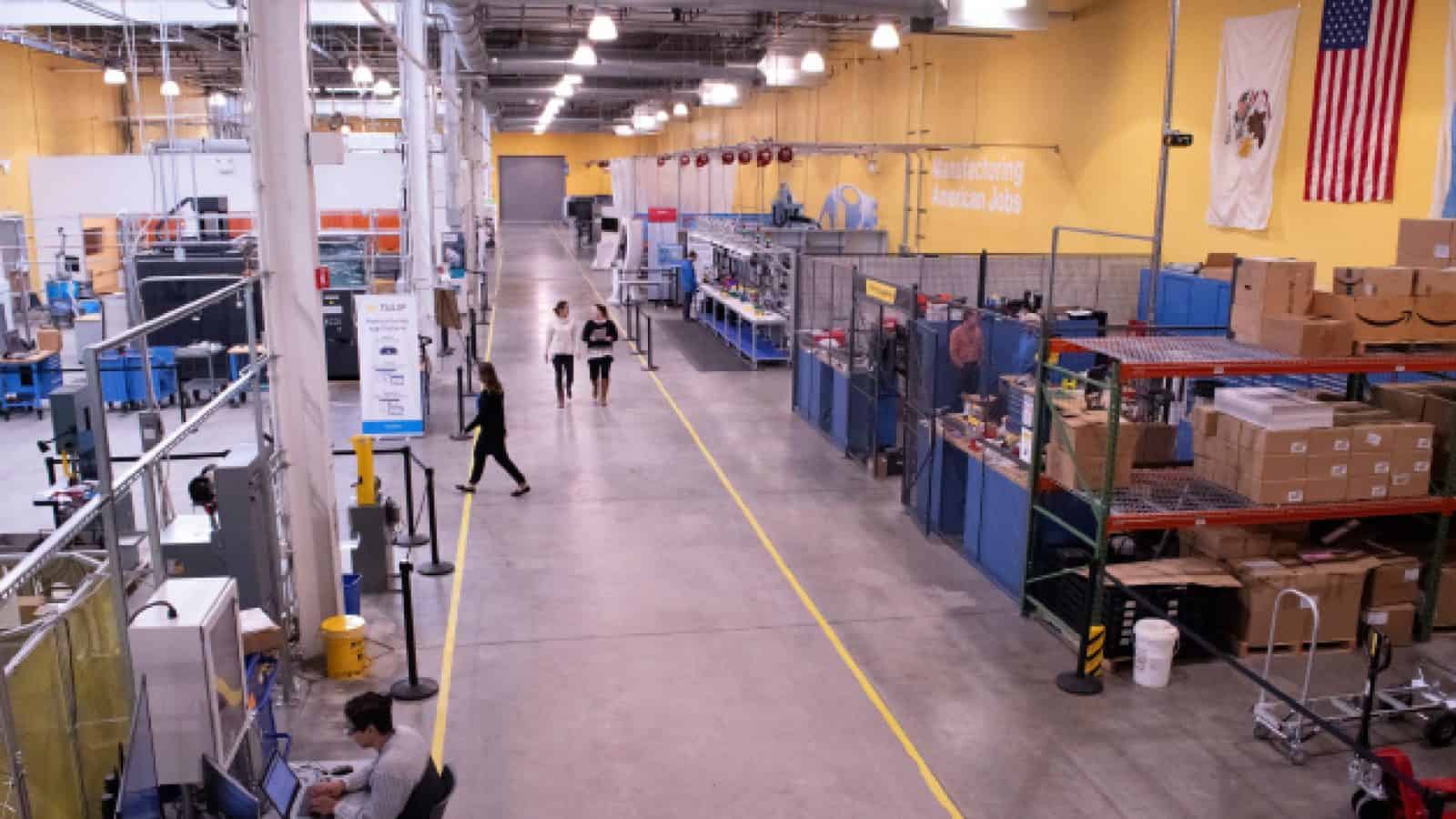The Human Factor in Industry 4.0: Capability-Led Change

A major global CPG company scaled digital transformation effectively across its manufacturing network by putting people at the center.

TAKEAWAYS:
● While change management holds the key to success in digital transformations, without buy-in from people—from the boardroom to the frontline—there won’t be any traction..
● Companies need to measure the impact of the transformation—it is critical to track KPIs to measure the success of a learning program just like they track the success of the overall transformation.
● Achieving scale in digital transformations requires thinking both globally and locally.
Expanding Industry 4.0 efforts across highly fragmented networks remains a genuine struggle. Without enthusiastic adoption by local teams, digital transformation risks losing momentum—leaving companies at risk of failing to realize a return on investment or unlock the efficiency gains promised by Industry 4.0.
As ever, change management holds the key to success—providing the “x-factor” that maximizes technology and business value. Some companies are reimagining change management by putting people at the center of their network transformation, building critical capabilities in-house, and creating “lighthouse” plants that serve as a beacon for the at-scale capabilities the organization needs to build.
This digital manufacturing approach comprises five core elements—strong cross-site communication through central governance and a diverse local team; adopting a value-back approach so efforts are made where they really count; implementing agile “waves” with the user at the center of the framework; designing an information technology/operations technology (IT/OT) stack in parallel to allow faster scale-up in other sites; and building capabilities in model sites and across the wider organization.
This article explores how a leading global CPG company harnessed capability building as part of its transformation effort (Figure 1). The company achieved a double-digit uplift in throughput across the digital transformation of approximately 20 business units in focus for this effort. Rarely can such results be sustained through a technology-focused approach alone.
Figure 1: The company used a structured approach to diagnose, design, launch, and deliver cohort-specific learning journeys across the network

Capability-led, from the Start
The company set the groundwork for a successful digital transformation program by establishing a digital manufacturing pilot in the largest site in its network and defining the digital operating model and IT/OT future state and rollout plan. It was ready to deliver in a digital world, but it needed its people to come on the journey.
To ensure success and to unlock the full potential of employees and tech in tandem, the company honed in on the skills, knowledge, and mindsets that aligned with how people create value for the business. Four elements made the difference: shared goals and priorities, tailored learning, agreed measures of success, and momentum post launch.
1. Organization goals and talent: Aligning priorities
From the outset, the company built its capability-building program around a clear picture of the organization’s transformation aspirations—and the talent needed to achieve them.
The program’s objectives reflected its people-led principles: creating awareness and excitement, which meant enabling everyone to envision the “art of the possible” and how their roles could be positively impacted through digital change; building digital, automation, and analytics skills by ensuring each person had the relevant technical skills to lead, design, build, implement, or adopt new tools; and transforming ways of working by establishing a broad understanding of new processes and digital tools and supporting greater collaboration with colleagues (Figure 2).
Figure 2: The company’s comprehensive academy curriculum achieved three primary objectives

2. A network of people: Tailoring the learning journey
To enhance the impact and scalability of its learning program, the company crafted learning journeys tailored to different needs. Instead of a one-size-fits all approach, the company defined cohorts across functions and grouped them by seniority level (Figure 3). It grouped each cohort according to the contribution they could make to the network’s digital transformation and the learning they would need to do it well.
Figure 3: Learning cohorts identified to group roles with similar digital and analytical learning needs

At the highest level, global leaders had a stake in the transformation journey and kept the program objectives in focus. They acted as champions of the overarching goal, providing clear communication that reinforced expectations and secured the resources needed to sustain the transformation journey. Advanced analytics teams learned the skills to build valuable digital and analytics solutions and the change teams brought forward the voice of the business to shape solutions and ensure their adoption.
Plant leaders and managers were role models for the new way of working and acted as influencers to sustain excitement and awareness. Associates made up the largest cohort, supporting the change and carrying it out in their on-the-ground activities.
“From the outset, the company built its capability-building program around a clear picture of the organization’s transformation aspirations—and the talent needed to achieve them.”
In practice, while global leaders focused on understanding the principles of digital and analytics, their primary learning goal was as transformation orchestrator and enabler. Meanwhile, analytics and change team members received more detailed training on specific tools and techniques, such as optimization using advanced analytics, including hands-on exercises and joining project teams to develop and implement use cases.
3. Measurement and key performance indicators (KPIs): Planning for success
The company understood that the learners’ voice matters from the start. Scaling was front of mind in the planning phase, and this included looking at how success would be measured. The company established KPIs to track the execution of the program by looking at participation and attendance. It tracked how smoothly the program was running by monitoring progress toward operational and financial targets.
At the same time, the company considered measures to mark the impact of the intervention, including measuring the participant experience and gathering feedback on the relevance of the learning.
4. The “steady state phase”: Maintaining momentum
The company tracked KPIs to hold teams accountable, with mechanisms to address challenges as they arose. Likewise, the company acted on post-session feedback from learners quickly using content tailored to meet cohort needs with each iteration.
Facilitators and production worked together to meet lesson delivery schedules and all participants were kept in the loop through reliable and clear communication of upcoming events. Local and regional champions helped to scale the program globally, acting as a critical link between the central transformation team and each site—tailoring content and supporting translations and local delivery.
Learning was then quickly converted into on-the-job training where employees could apply their knowledge in real scenarios with coaching through fieldwork.
How to Make the Shift
The quantifiable metrics achieved through the program are impressive: approximately 5,000 learners participated in the program, accumulating close to 100,000 hours of learning. Employees’ enthusiastic engagement reflected the quality of the program, which achieved a recommendation rate of more than 90 percent.
All of these efforts translated into real results on the factory floor, with a double-digit uplift in throughput across the sites in scope in the factory network. The program also delivered other benefits, including talent attraction and retention.
“Learning was then quickly converted into on-the-job training where employees could apply their knowledge in real scenarios with coaching through fieldwork.”
Other companies that are ready to unlock the potential of their whole network can also create a strong learning culture by adopting these actions:
- Establish leadership support through a steering committee, dedicated resources, and sponsorship who can “speak up” for program objectives.
- Take an agile approach to allow participants to provide feedback and contribute to the continuous refinement of the program.
- Track and measure by gathering feedback, tracking KPIs, and providing incentives that foster enthusiastic learning and offer opportunities to make meaningful improvements throughout the program.
- Think globally and locally—it’s important to strike a balance between the company’s global needs and its standard operating model and the local needs of learners.
- Communicate expectations clearly by having leaders reinforce the objectives globally with the help of local influencer leaders.
Achieving digital transformation at scale is not easy, but it is doable. This company successfully scaled its digital transformation program precisely because of its people, not in spite of them. M
About the author:

Mike Doheny is a senior partner in McKinsey’s Atlanta office, and co-leads our global Manufacturing and Supply Chain practice.

Roberto Migliorini is partner in McKinsey’s London office, and advises consumer clients on large-scale Industry 4.0 transformations.

Ewelina Gregolinska is an associate partner in McKinsey’s London office.

Justin Grover is an asset leader for McKinsey Academy in McKinsey’s Chicago office.
